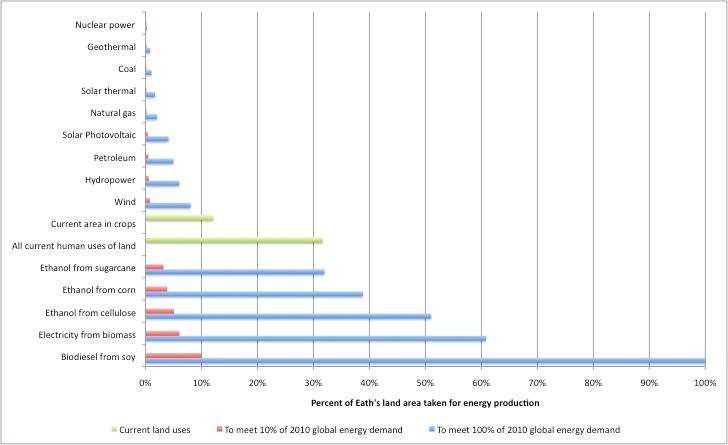Thank you...Parts of the area of Fukushima area are unsafe at the moment.
No further discussion needed...
Thank you...Parts of the area of Fukushima area are unsafe at the moment.
And its quite a large area.
Random soil samples taken in Tokyo are classed as radioactive waste.

http://www.thingsworsethannuclearpower.com/2012/03/earthquakes-and-tsunamis.htmlTo give some perspective, the amount of picocuries per gram given off by a Brazil nut is from 7-14 pCi/g and in a banana is 6 pCi/g. Natural trace amounts of elements (Radium 226, Uranium 238, Thorium 230 and Thorium 232) in a fertilizer could exceed 128 pCi/g.
The highest single pCi/g given in Gundersen’s spreadsheet was for Cesium 137 from the first of the 5 samples- at 167 pCi/g. Certainly we aren’t scared of radiation from trace elements in fertilizer or other natural sources, so the amount of activity here isn’t something to be concerned about in the environment. The rest of the numbers are certainly not dangerous levels.
Besides being around the soil, what would happen if you say, ate it? Ingested cesium is similar in uptake to potassium. It is also dispelled like potassium. If your kid ate the dirt, it is actually dispelled more quickly in children and teens. Trace amounts of cesium do not present a significant hazard.
Cobalt 60 is a more concerning element than Cesium generally, because although Cesium 134, 137, and Cobalt 60 all have decays with beta and gamma radiation involved, the gamma from Cobalt is significantly more energetic. However, the amount of activity given (a maximum of 40 pCi/g) shows that there is such a low level of Cobalt that it is not a significant concern.
Ingestion of Cobalt is less likely to be absorbed, from 10-30%. What is absorbed, a majority will be dispelled within days, although a very small amount might not be expelled for a few years. Using the most negative and conservative estimates (and probably wrong estimations- see the post on aspirin and the LNT method), Cobalt of this amount would not increase cancer risk by more than about 0.6% if continuously exposed for an entire lifetime in thick soil of this activity level. This estimate makes little sense, however, since within a matter of years the amount of cobalt 60 would have disappeared. In other words, this amount of cobalt should not cause concern.
We need further research to establish the effects of low level radiation exposure, and whether it has positive or negative effects. Right now we assume that there is a linear relationship between a dose causing a fatal cancer and any smaller dose, which creates a ridiculous assumption when taken down to the natural low level doses the earth provides. This assumption is part of why we may consider it "low level radioactive waste" simply because it is man-made, although not more radioactive than natural radiation.
(sources include: http://www.fusrapmaywood.com/factsheet/radenv.htm, http://www.evs.anl.gov/pub/doc/cesium.pdf, http://www.evs.anl.gov/pub/doc/cobalt.pdf)
More propaganda.
Still waiting to find out what going near Fukushima has to do with whether we install new nuclear in the UK.
Parts of the area of Fukushima area are unsafe at the moment.
So maybe you can tell us the safety history of all the nuclear power plants currently operating that are of the same design as the one proposed at Hinkley?
What's that I hear you mutter?...There are no current nuclear power plants of that design in operation?
So maybe you can tell us the safety history of all the nuclear power plants currently operating that are of the same design as the one proposed at Hinkley?
What's that I hear you mutter?...There are no current nuclear power plants of that design in operation?
It is to be a PWR - there are hundreds in operation across the planet, and a number in submarines and ships too, http://en.wikipedia.org/wiki/List_of_PWR_reactors
Nozzle
Actually it is to be an EPR - which is a new unit that has no operational plants yet...It is to be a PWR
What does EPR stand for?
What does PWR stand for?
Nozzle
And therein lies the ultimate contradiction in Greenpeace’s antinuclear agenda. “On the one hand the movement demands reductions in fossil fuel consumption while on the other it presents the greatest obstacle to achieving that goal,” writes Patrick Moore in Confessions of a Greenpeace Dropout. By campaigning diligently against our two best hopes for providing energy to our growing world population, Greenpeace is, in essence, sentencing us all to a dark, cold future — one that will be especially hard for those nations and populations who cannot afford the significant investment in wind or solar power.
